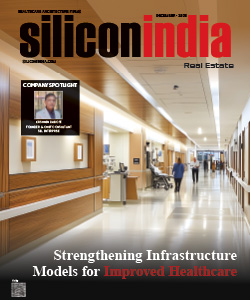Trump Targets Apple's India Manufacturing Plans to Protect US Jobs
By
siliconindia | Tuesday, 27 May 2025, 11:36:53 AM IST

- Trump threatens 25% tariff on iPhones made in India to boost US manufacturing.
- Apple warns US-made iPhones would sharply increase costs and prices.
- Tariff policy sparks debate over jobs vs. higher consumer prices.
In a strong message to Apple and other smartphone makers, US President Donald Trump announced a 25% tariff on iPhones and similar products manufactured overseas, including India, if they are sold in the United States. Speaking from the White House Oval Office during the signing of executive orders on nuclear energy, Trump singled out Apple’s decision to build factories in India, expressing clear disappointment with CEO Tim Cook.
Trump recounted a recent discussion with Cook, stating, "I had an understanding with Tim that he wouldn’t be doing this. He said he’s going to India to build plants. I said, ‘That’s okay, but you’re not going to sell into here without tariffs’". Emphasizing his preference for domestic manufacturing, Trump added, "We’re talking about the iPhone. If they’re going to sell it in America, I want it to be built in the United States".
Though initially focusing on Apple, Trump expanded his tariff threat to include all smartphone manufacturers, mentioning major players such as Samsung and Huawei. "It would be anybody that makes that product, otherwise it wouldn’t be fair", he said. The tariffs are expected to take effect by the end of June 2025.
Earlier on social media, Trump reiterated his stance, writing, "I expect their iPhones that will be sold in the United States of America will be manufactured and built in the United States, not India, or anyplace else. If that is not the case, a Tariff of at least 25 per cent must be paid by Apple to the US. American jobs come first"!
During a recent trip to Doha, Trump pressed Cook to prioritize US manufacturing, noting the high tariffs India imposes on imports make it a difficult market for American companies. "They’ve offered us a deal where they’re willing to charge us no tariff, but I told Tim, ‘I don’t want you building in India. Build here’". Trump highlighted India’s tariff policies as among the highest globally, complicating access to the market for US firms, but underscored his commitment to boosting domestic production.
Also Read: How Eco-Friendly Gadgets Are Changing Tech
Apple CEO Tim Cook addressed the tariff issue during the company’s Q2 2025 earnings call, clarifying that tariffs are linked to the product’s manufacturing location. Industry analysts warn that shifting iPhone production back to the United States would dramatically increase costs, given the higher wages and operational expenses compared to Asia. This could result in iPhone prices soaring to $3,000 or more, potentially dampening consumer demand.
Experts also point out that building a fully US-based supply chain would require massive investments and years of development due to the complex and interlinked global manufacturing networks that Apple currently depends on. The move could disrupt the company’s cost structure and global logistics significantly.
The policy announcement has ignited debate among economists and industry watchers. Critics caution that imposing tariffs could raise prices for American consumers and disrupt established global trade relationships. Supporters argue that such measures would create jobs and revive manufacturing in the US.
As of now, the White House has not provided detailed guidance on the tariff implementation or potential exemptions for companies investing in US manufacturing facilities.
In a related development, Tim Cook reportedly declined an invitation to join Trump and other tech executives during the president’s recent Middle East trip, a move that reportedly irked the US leader, according to a New York Times report.
The tension between Apple’s global manufacturing strategy and the Trump administration’s push for American-made products signals ongoing challenges for multinational companies balancing global supply chains with shifting geopolitical priorities.
Read More News :
Flipkart to Hire 5,000 Employees in 2025 Amid Quick Commerce, Fintech, and AI Push
India Champions Cultural Justice and Ethical AI at BRICS Summit

.jpg)
.jpg)
